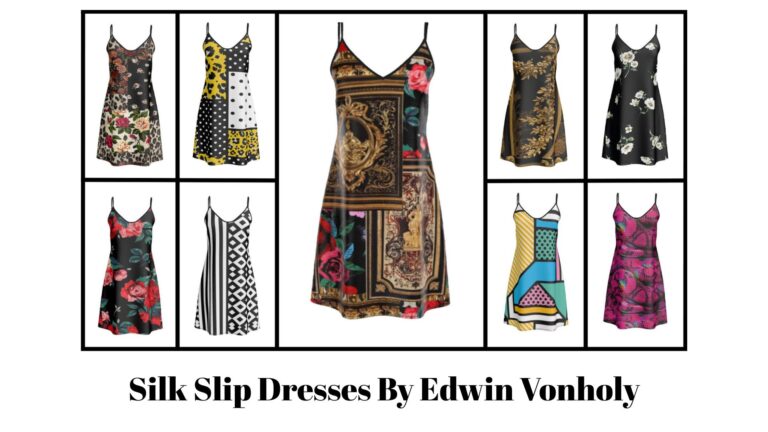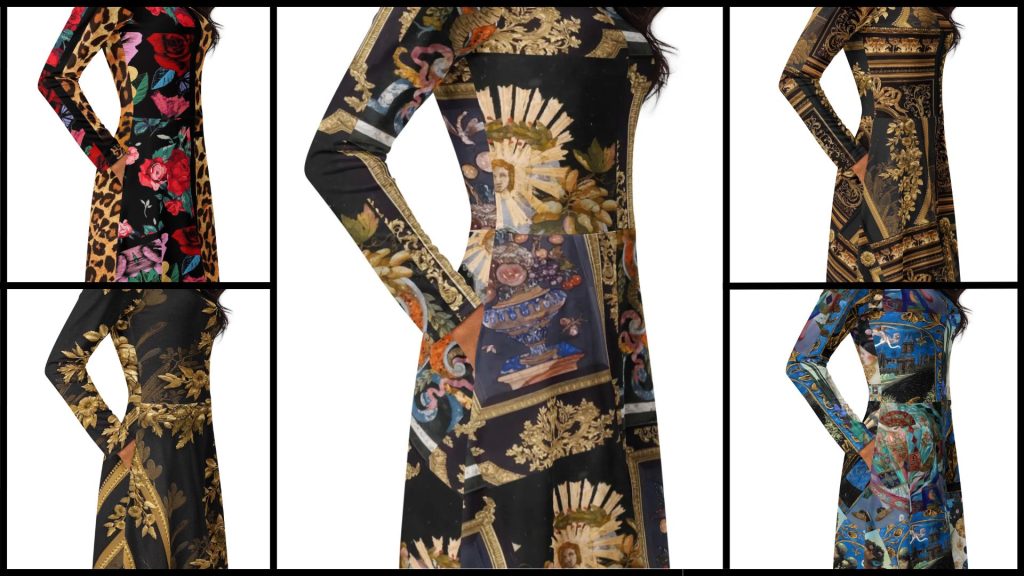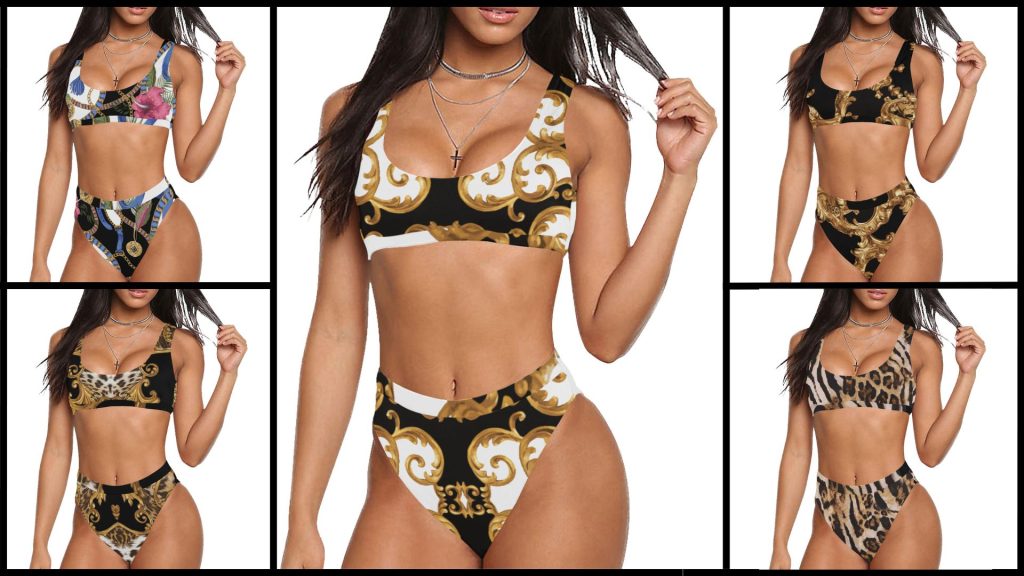The Ultimate Guide to Different Types of Vintage Dresses
Vintage dresses are timeless treasures that never go out of style. From the glamorous gowns of the 1950s to the sleek, minimalistic styles of the 1990s, vintage dresses offer a wide variety of silhouettes, fabrics, and designs that cater to every taste and occasion. Whether you’re a seasoned vintage lover or just starting your collection, understanding the different types of vintage dresses is key to finding the perfect piece for your wardrobe. Let’s dive into the ultimate guide to the various types of vintage dresses.
1. Fit-and-Flare Dresses (1950s)
The fit-and-flare dress, also known as the “circle dress,” is one of the most iconic vintage styles, most notably from the 1950s. This dress is characterized by a fitted bodice that flares out into a voluminous skirt, often with layers of crinoline underneath for added fullness. The design accentuates the waist and creates a flattering hourglass figure, making it perfect for both formal and casual events.
Ideal for: Those with an hourglass or pear-shaped figure.
Styling tip: Pair with a cinched belt and a pair of kitten heels for a full-on 1950s look.
2. Shift Dresses (1960s)
The 1960s brought a shift in fashion, with the rise of the mod movement and clean, straight lines. The shift dress is a simple, loose-fitting garment that skims the body without shaping or clinging to it. It typically features a short hemline and can be adorned with bold prints, geometric patterns, or solid colors.
Ideal for: Those with a rectangular or athletic body shape.
Styling tip: Add a pair of knee-high boots and large statement sunglasses for a true 60s-inspired ensemble.
3. A-Line Dresses (1950s-1970s)
The A-line dress is a classic silhouette that tapers in at the waist and then gently flares out, forming the shape of the letter “A.” This style is extremely versatile, making it a staple in many vintage wardrobes from the 1950s through the 1970s. It works well for a variety of occasions, from day to night, and can be dressed up or down depending on the fabric and accessories.
Ideal for: All body types, especially those with a pear or hourglass shape.
Styling tip: Pair with a simple cardigan for a daytime look or add a statement necklace for a chic evening outfit.
4. Maxi Dresses (1970s)
Maxi dresses were a huge trend in the 1970s, embracing the bohemian, free-spirited style of the era. These floor-length dresses are often made from lightweight fabrics like cotton or chiffon and feature flowing designs that can be both relaxed and dramatic. Maxi dresses often come with floral patterns, ethnic prints, or tie-dye designs.
Ideal for: Tall frames or those who want a relaxed, boho look.
Styling tip: Pair with a floppy hat and platform sandals for an effortless 70s vibe.
5. Tea Dresses (1940s-1950s)
The tea dress, also known as a tea-length dress, falls just below the knee and is ideal for more formal or semi-formal events. It typically features a fitted bodice and either a full or slightly flared skirt. Tea dresses often come in soft fabrics like lace, silk, or cotton, and they are known for their delicate, feminine designs.
Ideal for: Hourglass or petite body types.
Styling tip: For an elegant look, pair with vintage gloves and a small clutch. If you’re aiming for a more casual vibe, opt for ballet flats.
6. Peplum Dresses (1940s-1950s)
Peplum dresses are characterized by a short, gathered, or pleated fabric that falls from the waistline, creating a flared look. Popular in the 1940s and 1950s, this silhouette emphasizes the waist and adds curves, making it ideal for those looking to accentuate their figure.
Ideal for: Hourglass figures or those wanting to create curves.
Styling tip: Pair with a statement belt to further accentuate the waist.
7. Bodycon Dresses (1980s-1990s)
The bodycon dress, or body-conscious dress, is a form-fitting garment that hugs the body’s natural curves. This style became popular in the 1980s and continued into the 1990s. Made from stretch fabrics like spandex or knit, bodycon dresses are perfect for showing off your silhouette and can range from casual to formal designs.
Ideal for: Those with an athletic, hourglass, or petite body shape.
Styling tip: Pair with a bold statement necklace or a leather jacket for an edgy twist on a classic.
8. Halter Dresses (1950s-1970s)
The halter dress features straps that tie around the neck, leaving the shoulders and arms exposed. This style is flattering for many body types and is particularly popular in vintage designs from the 1950s to the 1970s. Halter dresses can range from formal evening gowns to casual summer dresses and often feature a variety of patterns and fabrics.
Ideal for: Those with an hourglass or athletic body type.
Styling tip: Pair with strappy sandals for a summer-ready look or dress it up with heels for a night out.
9. Slip Dresses (1990s)
Slip dresses gained popularity in the 1990s, often worn as both undergarments and standalone pieces. With their silky, delicate fabric and minimalist design, slip dresses are perfect for achieving a simple, elegant look. They often have adjustable straps and come in a variety of lengths and colors.
Ideal for: Tall or petite frames, or those with a slim or straight body shape.
Styling tip: Layer with a cozy cardigan or leather jacket for a casual twist or add a statement necklace for evening wear.
10. Flapper Dresses (1920s)
The flapper dress is synonymous with the Roaring Twenties, characterized by its loose fit, dropped waist, and fringe or bead embellishments. This dress style was designed to allow women to move freely and was often paired with long pearls and a bobbed haircut. Flapper dresses are perfect for anyone looking to channel the glamour of the 1920s.
Ideal for: Pear-shaped or straight body types.
Styling tip: Pair with a cloche hat and vintage-inspired shoes for a full-on Gatsby look.
Final Thoughts: Vintage Dresses for Every Style
No matter your body type or personal style, there is a vintage dress out there that will make you feel stunning. Vintage clothing offers an incredible variety of silhouettes, fabrics, and designs, ensuring there’s a perfect dress for every occasion and every figure. Whether you love the classic elegance of the 1950s, the boho vibe of the 1970s, or the sleek minimalism of the 1990s, vintage dresses allow you to express your unique personality and style. So, start exploring and find the vintage dress that speaks to you!





